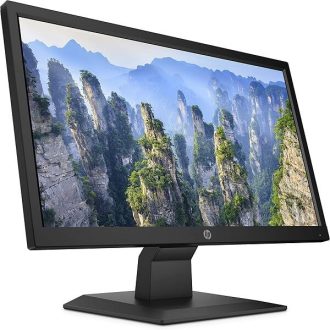Subtotal: ₹19,800.00

Make Sure You Read This Before Buying Plants for outdoor
1. Know Your Climate and USDA Hardiness Zone
Plants are suited to specific climates and temperatures. To ensure the success of your outdoor plants, it’s essential to understand the climate of your region and choose plants that thrive in it.
- USDA Hardiness Zones: These zones indicate the lowest temperatures a plant can tolerate. Make sure the plants you’re considering are suited to your zone. For example, some plants may only grow in warmer zones (like tropical plants), while others are cold-hardy and can withstand colder winters.
- Local Climate: Consider not just the average temperatures, but also rainfall, humidity, and seasonal conditions. A plant that thrives in a coastal region may not do well in a dry, inland area.
2. Consider the Plant’s Sunlight Requirements
Different plants have different sunlight needs:
- Full Sun: Requires at least 6 hours of direct sunlight daily. Perfect for most flowering plants and vegetables like tomatoes or sunflowers.
- Partial Sun/Partial Shade: These plants do well with 3-6 hours of sunlight a day. Good for areas that are shaded in the afternoon but still get some sunlight.
- Full Shade: Thrives with little to no direct sunlight. Perfect for areas with heavy tree cover or shaded areas of your garden.
Ensure that the plant’s sunlight requirements match the location where you plan to plant it. For instance, a plant that needs full sun won’t thrive in a shady corner of your yard.
3. Check Soil Type and Drainage
Plants have specific soil preferences, so it’s essential to assess your soil before purchasing.
- Soil Type: Some plants prefer well-draining sandy soils, while others thrive in heavier, loamy soils. If you’re unsure about your soil type, conduct a simple soil test or consult a local nursery.
- Soil pH: Some plants, such as azaleas, prefer acidic soil, while others, like lilacs, prefer alkaline soil. Make sure the plant matches the pH level of your garden soil.
- Drainage: Poor drainage can lead to root rot. Check that the area where you’re planting has good drainage. If necessary, improve drainage by adding organic matter or using raised beds.
4. Understand the Plant’s Water Needs
Different plants require varying amounts of water. Overwatering or underwatering can both be detrimental.
- Low Water Needs (Drought-Tolerant): Plants like succulents, lavender, and many native plants can handle dry conditions once established. These are perfect for water-wise gardens.
- Moderate Water Needs: Many trees, shrubs, and perennial flowers fall into this category and may need regular watering, especially in hot summer months.
- High Water Needs: Some plants, like ferns or aquatic plants, require consistently moist soil or frequent watering.
Know whether the plant you’re interested in is drought-tolerant or water-hungry and match it with your garden’s watering capabilities.
5. Assess the Plant’s Size at Maturity
Before buying any plant, consider how large it will grow in both height and spread. This is especially important for trees and large shrubs.
- Growth Habit: Some plants, like shrubs or small trees, can become much larger than anticipated if left unchecked. Make sure you have enough space in your garden to accommodate the plant at its full size.
- Maintenance: Some plants, such as climbing vines or fast-growing trees, may require frequent pruning or maintenance to prevent them from overtaking other plants or structures.
6. Think About Maintenance and Care
Consider how much time and effort you’re willing to invest in maintaining your outdoor plants. Some plants require a lot of attention, while others are more low-maintenance.
- Pruning: Some plants need regular pruning to encourage healthy growth, while others are self-maintaining.
- Fertilization: Some plants may require specific fertilizers, while others may thrive with just compost and organic matter.
- Pest Control: Certain plants are more prone to pests and diseases. If you’re not keen on using pesticides, look for naturally resistant plants or those that attract beneficial insects.
7. Plant with Seasons in Mind
Think about how the plants will look through all seasons of the year.
- Flowering Plants: Some plants bloom in the spring, while others may flower in summer or fall. Choose plants that will give you continuous color throughout the year.
- Evergreens: These plants retain their leaves in winter, providing structure and color during the colder months.
- Seasonal Interest: Consider adding plants with interesting foliage or bark for winter interest, or choose plants that change color in the fall for a dramatic seasonal effect.
8. Consider Companion Planting
When designing your garden, think about how different plants will interact with each other. Certain plants benefit from being planted near each other, while others may compete for nutrients or attract pests.
- Beneficial Companions: Some plants, such as marigolds, can deter pests, while herbs like basil and rosemary are great companions for vegetables.
- Avoid Planting Near: Some plants may compete for water and nutrients. For example, don’t plant large trees next to smaller plants that need a lot of sunlight and space.
9. Choose Native Plants When Possible
Native plants are those that naturally grow in your area and have adapted to the local climate, soil, and pests. They typically require less water, fertilizer, and pesticides once established, making them an excellent choice for sustainable gardening.
- Benefits of Native Plants:
- Low maintenance: They are better suited to local soil and climate conditions.
- Support local wildlife: Native plants provide food and shelter for local birds, pollinators, and beneficial insects.
- Ecosystem support: Planting native species helps preserve the natural ecosystem and biodiversity.
10. Buy from Reputable Nurseries or Garden Centers
To ensure you’re buying healthy, well-cared-for plants, purchase from reputable nurseries or garden centers. Look for plants with vibrant foliage, healthy roots, and no signs of disease or pests.
- Inspect Before Buying: Always check for pests, damaged leaves, or signs of disease. Avoid buying plants with yellowing leaves, mold, or insect infestation.
- Ask Questions: If you’re unsure about care instructions or plant suitability, don’t hesitate to ask the staff for guidance. They can often recommend plants suited to your region and give tips on care.
11. Consider Long-Term Growth and Investment
Finally, think about the long-term investment. Some outdoor plants, such as trees and shrubs, can take several years to reach their full potential. Make sure you’re willing to wait for the plant to mature and be prepared to provide the necessary care during that time
thood.







1 Comment